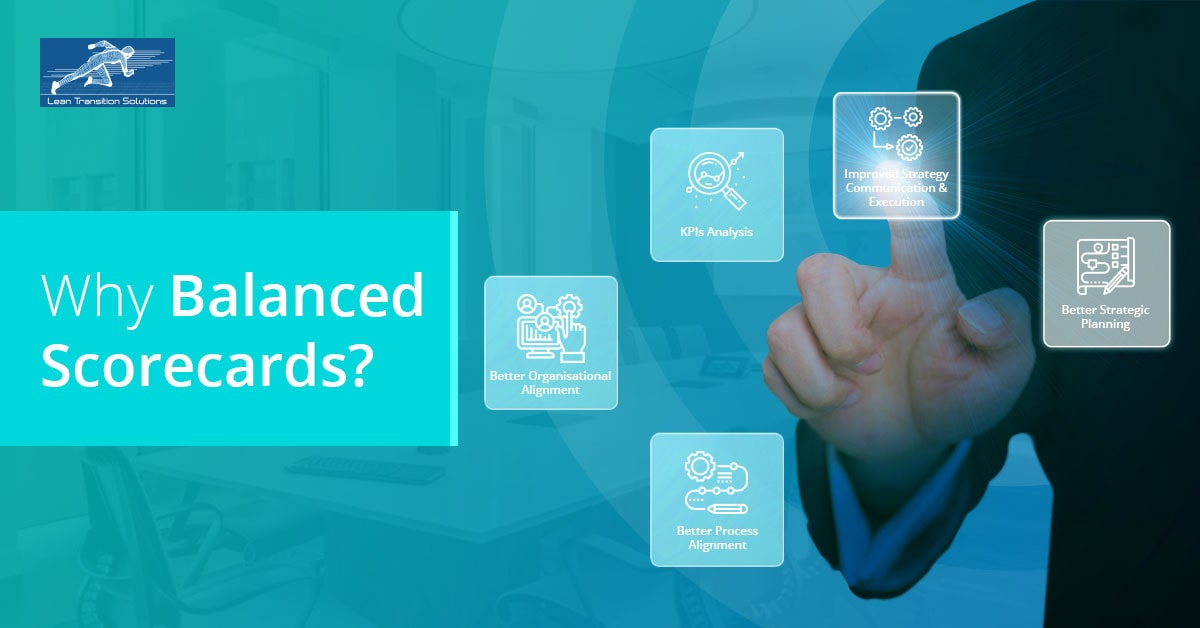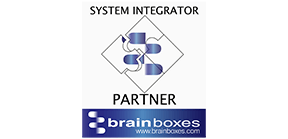Strategic Planning and Management with Balanced Scorecards
- By Brett Griffiths
- Balanced scorecard
- January 22 , 2021
- Share

The Balanced Scorecard (BSC) is a performance management tool that gives a quick and comprehensive view of the business KPIs. Using different KPI metrics, BSC identifies, analyse, controls and improves internal business functions and measures their external outcomes. A Balanced Scorecard provides a quantitative analysis of several performance metrics by which organisations can interpret information to make better decisions. A disciplined framework such as a balanced scorecard "connects the dots" of various strategic planning and management components.
Organisations use a Balanced Scorecard to:- Define and improve the business strategies
- Link strategic objectives to long-term targets, annual budgets and resource allocation processes
- Understand the critical elements of the business strategy
- Facilitate change within the organisation
- Improve organisational vision and strategy
The Balanced Scorecard essentially calls organisations to create internal metrics to assess their business performance in four key areas. They are Finance, Customer, Process and People.
Finance Goals - Analysis of financial goals that will have a positive impact on the organisation (revenues, earnings, return on capital, cash flow)Customer Goals- Analysis of metrics like quality, on-time delivery and many others that customers value the most (market share, customer satisfaction measures, customer loyalty).
Process Goals- Understand the organisation's ongoing process and identify ways to align it with financial and customer goals (productivity rates, quality measures, timeliness). Assessing internal business processes is all about understanding how smoothly and efficiently the business is running.
People Goals- Capabilities that the employees should possess to achieve the overall organisational goals (morale, knowledge, turnover, use of best-demonstrated practices). It is about the general corporate culture.

Why Balanced Scorecards?
1. Better Strategic Planning
The Balanced Scorecard is vital in building and communicating strategies across the organisation. A strategy map shows a logical cause-effect relationship between the different strategic objectives. Strategy Map ensures harmony between interrelated strategic objectives. Strategy mapping vastly improves any strategic communication effort. Using a well-designed strategy map, employees can see how they contribute to the organisation's goals.
2. Improved Strategy Communication & Execution
To execute a strategy that is not clearly understood is challenging. Internal strategy communication is crucial to the successful implementation of the organisation's goal or plans. Employees should understand and contribute continuously to the betterment of the organisation. Regular analysis using a balanced scorecard will help employees align with organisational vision.
3. KPIs Analysis
Key Performance Indicators (KPIs) are a set of performance measurements that help organisations achieve key business objectives. Key Performance Indicators and Balanced Scorecard aligns employees' performance with the organisation's long-term strategic goals. Using KPI analysis, organisations understand whether they are moving in the right direction and make the right decisions to implement other improvement strategies.
4. Better Organisational Alignment
The Balanced Scorecard ensures that the organisational structure aligns with the strategic objectives. Organisations should make sure that all business units and support functions are working towards the same goals. On ensuring this, organisations can execute growth plans effectively.
5. Better Process Alignment
A proper strategy focused organisation gets better outcomes. Well implemented balanced scorecards help the organisation align various business processes such as budgeting, risk management and analytics and much more with the preset strategic priorities.
Start Free Trial
LEAN TRANSITION SOLUTIONS
The Old Vicarage, Pershore Road, Upton Snodsbury, Worcester, Worcestershire, WR7 4NR, United Kingdom.
BLOG
Lean Transition Solution
-
Lean Industry 4.0 Solutions
- TITAN:Computerised Maintenance Management System
- Data Point:Computerised Balanced Scorecard
- Janus: Automated Shop-floor Data Capture System
- T-Card: Integrated Production Planning and Plant Level Execution System
- JDI: Maintenance Automation App
- Maximus: Integrated ERP System
- e-Contractor: Integrated In-house Contractor Management System
- Q-Point: Integrated Quality Management System
- Safety-Point: Integrated Health and Safety Management System
- Lean Assessment: Lean Audit and Assessment System
- Saisho: Lean 5S Audit and Assessment App
- Emergency Response App: To Manage Emergency Situations
-
Leadership 4.0 Solutions
- Your Career Academy(YCA): Learning and Development System
- YCA e-Learning : Management System
- MentorYou(MU): Mentoring App
- Leadership 4.0 : Leadership Transformation Program
- Lean Manufacturing Workshop
- Lean Manufacturing Consulting
- ILM Accredited Green Belt Training and Certification Program
- ILM Accredited Black Belt Training and Certification Program
- Software Development Service
- Resources
- Company
- Contact











